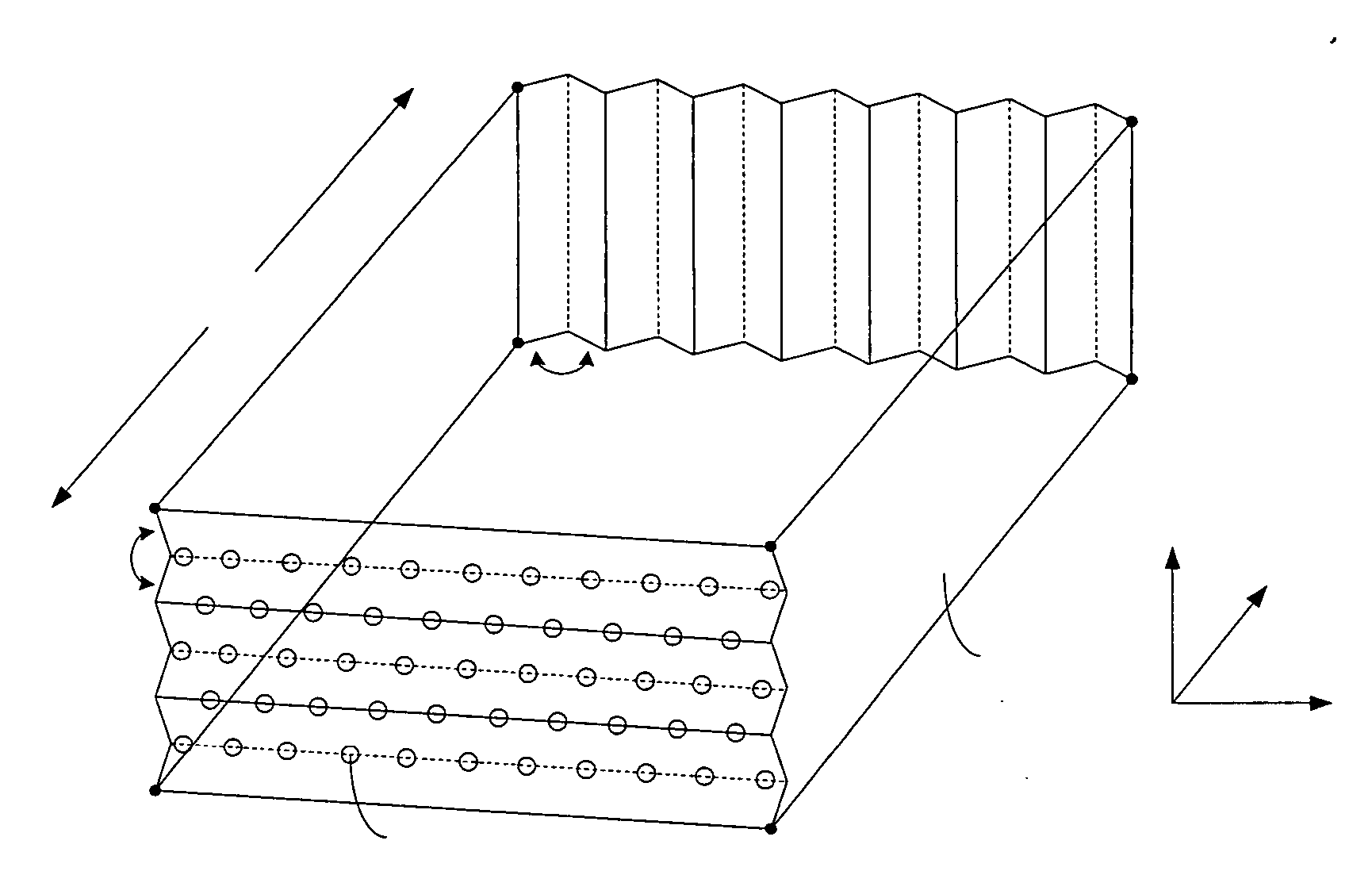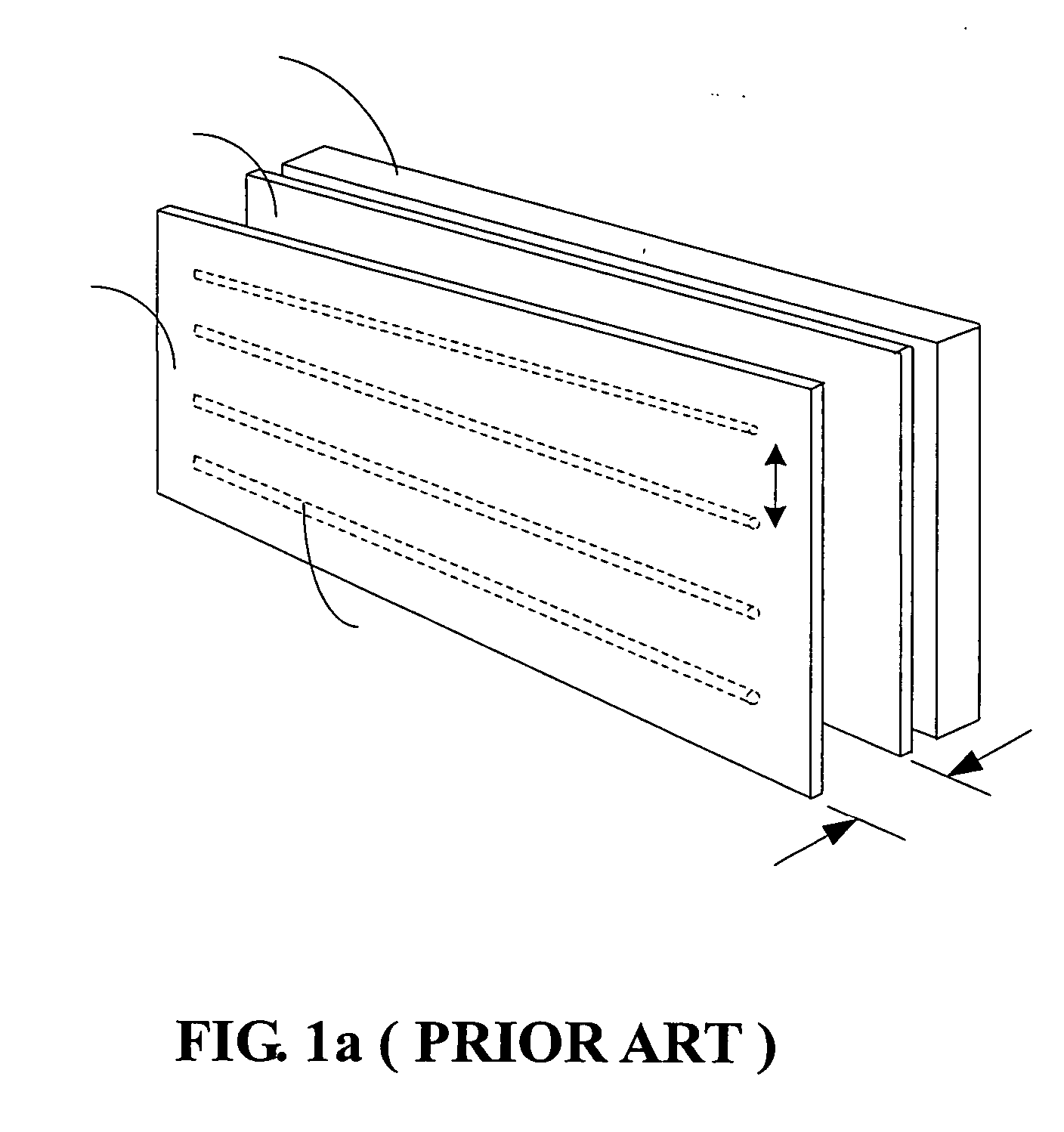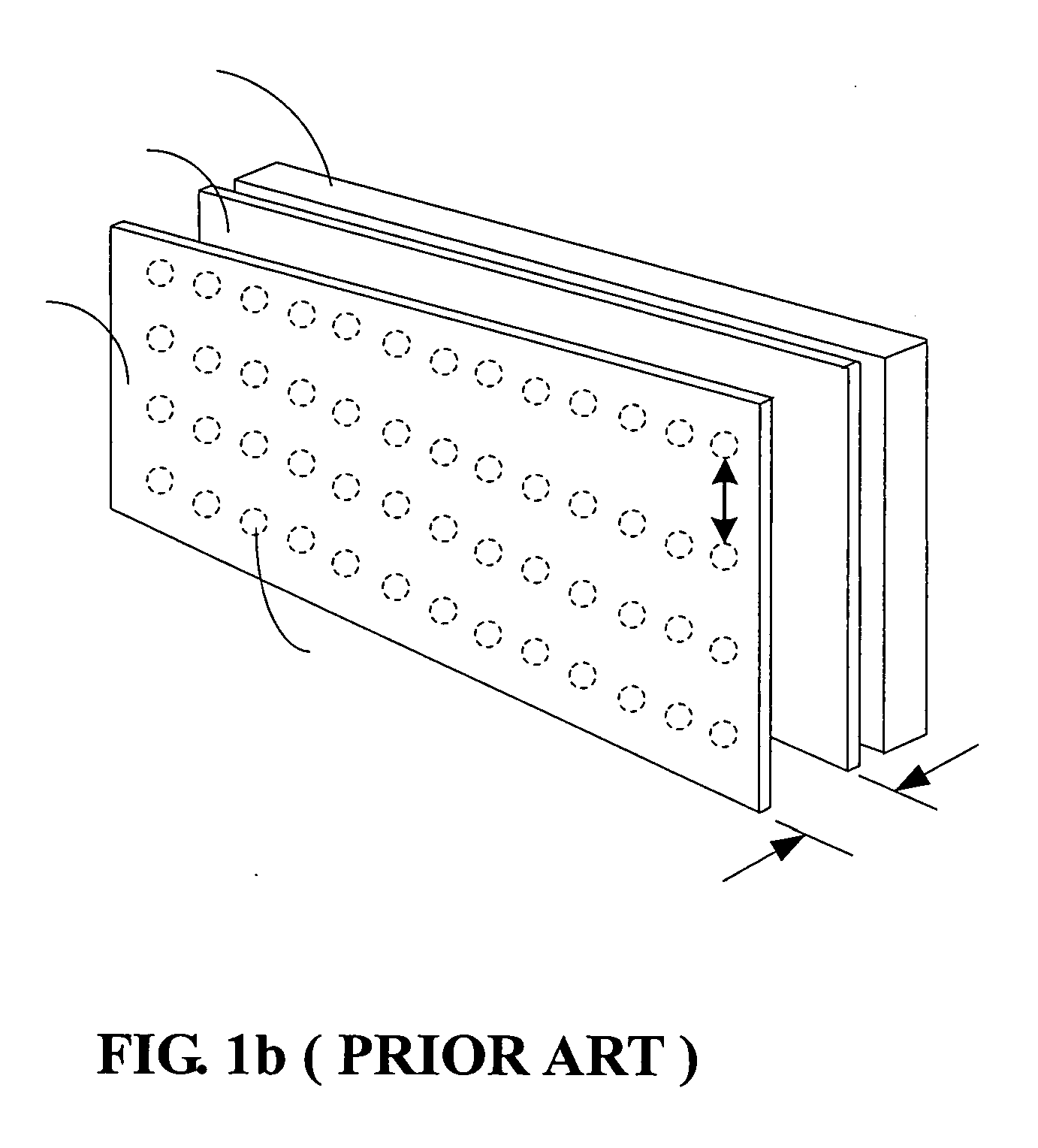Super slim LCD backlight device using uniforming chamber
a backlight device and uniforming chamber technology, applied in the direction of planar/plate-like light guides, lighting and heating apparatuses, instruments, etc., can solve the problems of ineffective cost and yield improvement of light guide plates, difficulty in fabricating large-size light guide plates, and lack of side-edge typed techniques, etc., to achieve highly uniform planar light without sacrificing cost, heat dissipation and power consumption. , the effect of high light uniformity
- Summary
- Abstract
- Description
- Claims
- Application Information
AI Technical Summary
Benefits of technology
Problems solved by technology
Method used
Image
Examples
first embodiment
[0026]FIG. 2a is a schematic diagram showing a backlight device according to the present invention. As illustrated, the backlight device at least contains multiple LEDs 10 as a light source and a uniforming chamber 20 positioned between the LEDs 10 and the LCD panel (not shown). Please note that the LEDs 10 could be all white-light LEDs, or could contain red-, green-, and blue-light LEDs, or could be partly white-light LEDs and partly red-, green-, and blue-light LEDs, or any appropriate combination of colored LEDs. The LEDs 10 could be arranged in an array with regular spacing, or the LEDs 10 could be grouped (e.g., one red-light, one blue-light, and two green-light LEDs a group) and the groups are arranged in an array with regular spacing, or the LEDs 10 could be arranged in any appropriate manner. In other words, the present invention does not require the LEDs 10 to have any specific color combination or location arrangement. As to the total number of LEDs 10, it is dependent on ...
second embodiment
[0039]FIG. 3a is a schematic diagram showing a backlight device according to the present invention. The present embodiment is identical to the previous embodiment with only the following differences: (1) The light emitting plane (i.e., the A-B-C-D plane) contains a series of rectangular planes aligned in parallel with the adjacent planes' sides joined together with an included angle θ1 between 180° and 90° so that wave-like crests and troughs are formed along the X axis; and (2) The light entering plane (i.e., the E-F-G-H plane) contains a series of rectangular planes aligned in parallel with the adjacent planes' sides joined together with an included angle θ2 between 180° and 90° so that wave-like crests and troughs are formed along the Y axis. Please note that, when θ1=θ2=180°, the present embodiment is identical to the previous embodiment.
[0040]FIG. 3b is a schematic diagram showing the operation of the uniforming chamber of the backlight device of FIG. 3a, which is a top view al...
PUM
 Login to View More
Login to View More Abstract
Description
Claims
Application Information
 Login to View More
Login to View More - R&D
- Intellectual Property
- Life Sciences
- Materials
- Tech Scout
- Unparalleled Data Quality
- Higher Quality Content
- 60% Fewer Hallucinations
Browse by: Latest US Patents, China's latest patents, Technical Efficacy Thesaurus, Application Domain, Technology Topic, Popular Technical Reports.
© 2025 PatSnap. All rights reserved.Legal|Privacy policy|Modern Slavery Act Transparency Statement|Sitemap|About US| Contact US: help@patsnap.com



